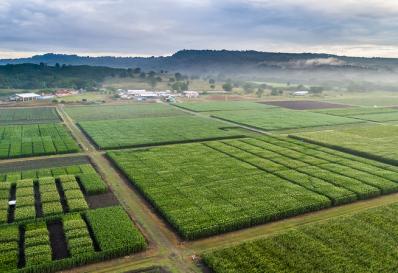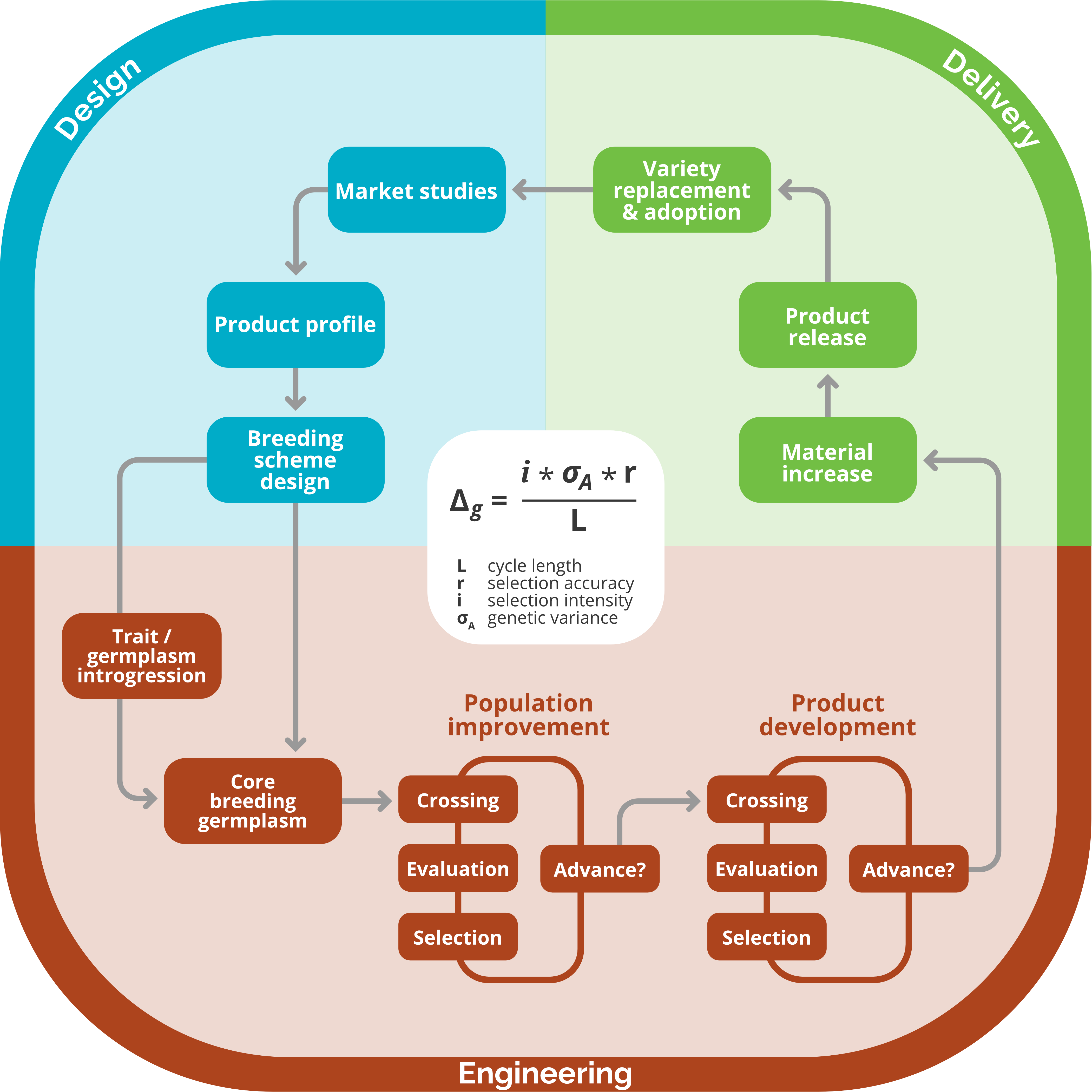September 30, 2021

The basic science underlying the process of genetic improvement in crops is now well-understood, if not widely applied. EiB applies these quantitative principles to develop practical advice and guides to help breeders optimize their programs.
The goal of breeding scheme optimization is to be able to effectively deliver new varieties needed by farmers, where the breeding goals are well documented in a product profile and resources have to be allocated to pipelines to deliver products that match the description as rapidly as possible.
EiB has developed new practical manuals to support breeders, which can be found at: https://excellenceinbreeding.org/toolbox/tools/eib-breeding-scheme-optimization-manuals
As a first step, EiB recommends that targets (demand) should be well defined, then breeding pipelines and schemes should be designed to match the demand. The breeding schemes need to be well-documented as a process, in order to identify parts of the process that should be adapted or where optimizations can be made.

Breeding as an industrial process
The first manual discusses breeding scheme documentation in the context of germplasm and trait introgression strategies, and forms the first of a series of manuals that will touch on guidelines for the tasks and decisions to be optimized.
The second manual covers how to set valid performance indicators for different levels of the breeding process, with genetic gain as a high-level indicator being used as an example. The toolbox also features tools on how to calculate genetic gain, along with a webinar designed to support NARES and CGIAR breeders in enhancing and measuring genetic gain in crop breeding.
The third manual provides a best-practice definition of heritability and outlines the benefits and drawbacks of different calculation methods of this key performance indicator used for quantitative optimization.
The fourth manual focuses on estimating surrogates of genetic value describes and compares different methods of estimating genetic value, with discussions of theory, strengths and weaknesses and practical examples.
And the most recent addtion, the fifth manual, describes selection intensity, how to calculate it, and its importance in determining response to selection.
For any questions or suggestions regarding this manual series, please contact Eduardo Covarrubias-Pazaran, EiB Optimizing Breeding Schemes lead: g.covarrubias@cgiar.org